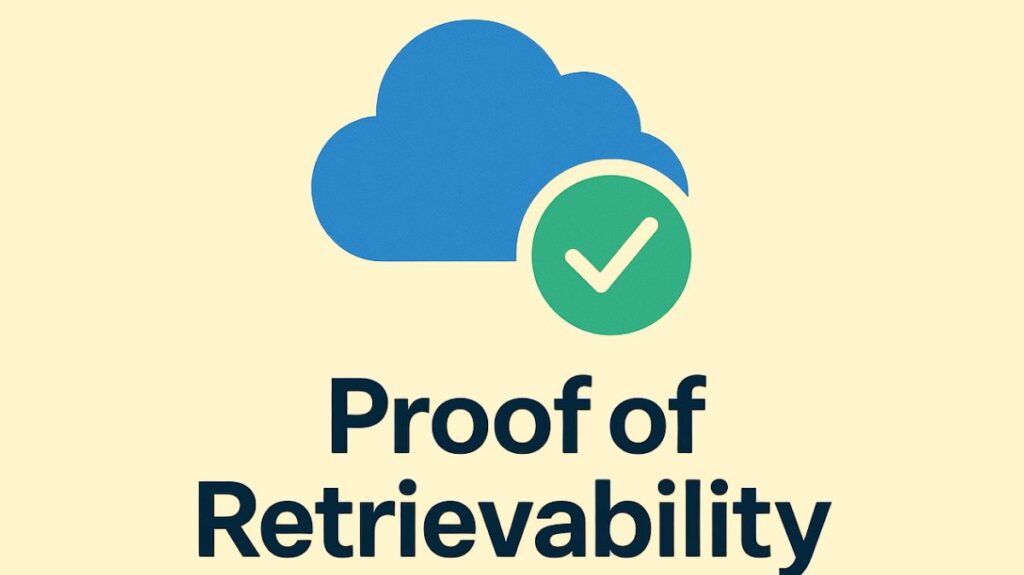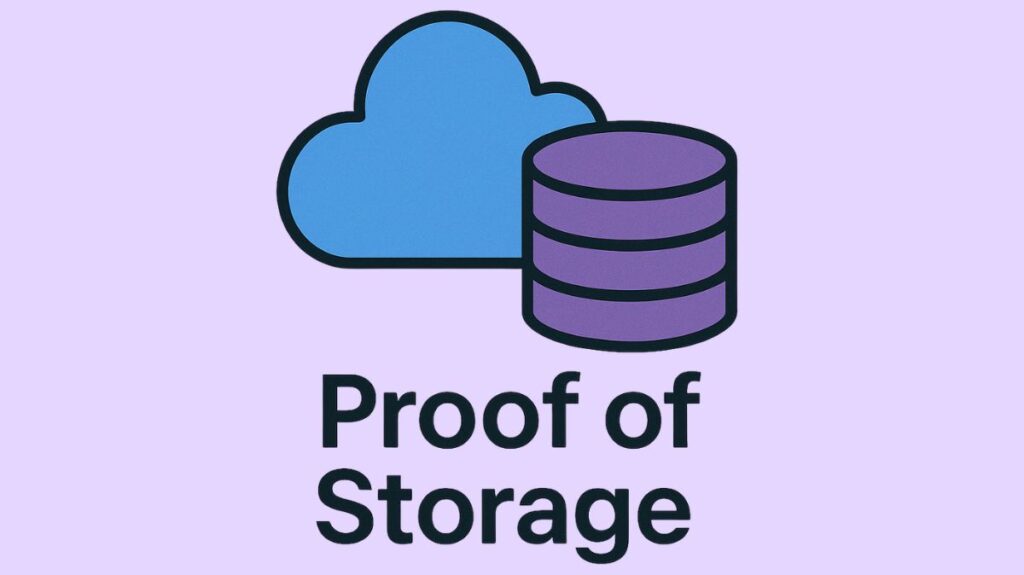Proof of Retrievability (PoR)

Proof of Retrievability (PoR) is a cryptographic mechanism that allows a user to verify that a file stored on a remote server is intact and retrievable, without needing to download the entire file. It provides assurance to the user that their data is available and can be recovered if needed, even from a potentially untrusted server.
Here’s a more thorough breakdown:
Key Concepts of Proof of Retrievability
Client (Verifier): The person who wishes to make sure their data may be retrieved.
Server (Prover): Data belonging to the user is stored remotely.
File (F): The server’s data storage.
Authentication Data: Client-generated data that is kept on the server with the file and is used for validation.
Verification: Method wherein the server reacts to challenges sent by the client by providing proofs based on authentication data in order to confirm the integrity of the data.
How it works
File Encoding and Storage: The file is encoded by the client using an encoding method (such as error-correcting codes), and it is stored on the server together with authentication information (such as tags or proofs).
Challenge Generation: The server receives challenges from the client, which are arbitrary requests for information.
Response and Verification: In order to reply to the challenges, the server uses the authentication information.In order to verify the file’s integrity and retrievability, the client compares the responses to the anticipated outcomes.
Purpose of Proof of Retrievability
Data Integrity: Makes certain that the data has not been altered or distorted.
Retrievability: Verifies the complete recovery of the data in case it is required.
Remote Auditing: Allows data saved remotely to be periodically verified without downloading the complete file.
Security: Guards against data corruption or loss brought on by malicious attacks or server failures.
Advantages of Proof of Retrievability
Efficiency: Is less computationally and communication intensive than downloading the complete file for validation.
Cost-effective: Lowers the client’s and server’s storage overhead.
Scalability: Allows for several verifications and big files.
Essentially, Proof of Retrievability gives customers the ability to contract with a server to store their data while still having assurances about the availability and accuracy of their data.
Proof of Storage (PoS)

A cryptographic system called Proof of Storage (PoS) is intended to confirm that a distant server is actually keeping a certain file or piece of data. The purpose of this approach is to verify that cloud storage providers are keeping their word to store data and haven’t deleted or changed it.
PoS is broken down as follows:
Purpose
- A client, called a “verifier,” sends data to a server, called a “prover,” and it confirms that the server is actually storing the data.
- Checking the legitimacy of a remote file is its primary use.
- Cloud storage server performance is often assessed using this way.
- It ensures data integrity by checking for changes.
How does Proof of Storage Works
- The data is sent to the server (prover) in an encoded form by the client (verifier).
- A smaller, encoded copy or metadata is locally stored by the client.
- After then, a challenge-response procedure is applied to the server.
- The client poses “challenges,” or precise questions regarding the data, and the server must answer them to demonstrate that it still has the data.
Key Features
Efficiency: PoS is efficient for both clients and servers because it verifies without the client downloading the entire file.
Integrity: Data integrity is ensured by verifying data without alteration.
Continuous Availability: Certain Proof of Spacetime techniques, like Filecoin’s, additionally confirm that the data is consistently accessible over time.
Participants
Provers: Data storage is the responsibility of these participants.
Verifiers: They “verify” whether or not the provers are storing data. Challenges are given by verifiers to provers, who then have to provide a proof based on the particular PoS method being used.
Examples and Applications
Filecoin: Proof of Replication and Proof of Spacetime, or PoS, are used in this decentralized storage network to make sure that storage providers are keeping data and not just making empty claims.
General Cloud Storage: Any cloud provider can utilize PoS to confirm the accuracy of data stored there.
Despite having many of the same characteristics, the various proof schemes that are variants of PoS differ significantly from one another.
